Auto review: 1925 Chrysler Six vs. 2025 Chrysler Pacifica Hybrid
Published in Automotive News
BELLE ISLE, Michigan — Happy 100th birthday, Chrysler, you’ve given us the gift of many memorable automobiles over the years.
Over a century not much — and yet everything — has changed.
As in 1925 with its Six (and sister Four) models, Chrysler today offers two 2025 vehicles for the U.S. market: the Pacifica and Voyager minivans. Following in the footsteps of its Six, Pacifica is an innovative family vehicle, bears a winged logo, rides on four air-tube tires and burns gasoline. Those fundamentals aside, a test drive of the two Chrysler icons reveals just how much autos have evolved after a century of innovation.
Speed
I tested the 2025 Pacifica plug-in Hybrid and the 1924 Six B-70 (the prototype for the ’25 production car) at the brand's 100th birthday bash at the Detroit Yacht Club last week. I rode both at 35 mph around Belle Isle’s perimeter road (behind the wheel of the Pacifica; riding shotgun in the Six with an expert driver, Neal).
That’s slow by Pacifica standards, and just about right for the Six.
“You wouldn’t have wanted to go much faster than that on the roads they had back in the day,” laughed Chrysler historian Brandt Rosenbusch. No wonder the Six had a big, Jeep-like spare hanging out the back (the Pacifica comes standard with a tire repair kit). The Six wasn’t slow for its day. Indeed, its smooth, 3.3-liter inline-6 (thus the Six moniker. The Four was powered, natch, by a four-cylinder engine) was prized for its pace — so much so that Chrysler advertised its impressive-for-the-time 70 mph top speed with the B-70 badge.
Had that tradition continued, Chrysler’s fire-breathing, 173-mph, 435-horsepower, V8-powered 2005 sedan would have been called the B-173 instead of the 300C SRT8.
The Pacifica is a rocket ship compared to the Six B-70 with a top speed of 106 mph and a 0-60 mph dash of 7.3 seconds. Zero-to-60 mph in the Six?
“I don’t think anyone has ever asked that,” laughed Rosenbusch. “Probably a minute.”
Operation
It takes a minute and several steps to start the Chrysler Six:
1) Depress the clutch pedal with your left foot.
2) Turn on the ignition to activate the six-volt battery.
3) Pull out the choke (if the engine is cold) to add fuel to the carburetor.
4) Push the starter button on the floor with your right foot.
5) If the Six struggles to fire, maintain pressure on the starter button with your right toes and goose the accelerator pedal (actually a button on the floor next to the starter button) with your right heel.
VROOM! You’re ready to go. The 2025 Pacifica is as simple as pushing a dash button — its 12-volt battery turning over the starter motor.
Ah, how spoiled we’ve become. Remember clutch pedals?
Manual transmissions have largely been relegated (performance cars aside) to the ash heap of history. Since it first appeared as a three-row SUV from 2004-08 (evolving into a minivan in 2017), Pacifica has never been operated by a stick.
But a three-speed manual is all you got in the ‘25 Six. Its steering wheel looks oddly modern with its center-mounted horn and what appear to be a pair of shift paddles hanging off the sides. They aren’t shift paddles, though. The right paddle acts as a sort of cruise control (“20 mph was a good speed,” smiled Rosenbusch). The left paddle? It was used to advance the spark plug timing if the engine ran rough.
As if mastering a stick wasn’t enough, drivers also had to adjust ignition timing.
Driver Neal expertly negotiated the H-pattern gearbox (REVERSE in the northwest corner) on our drive, but Pacifica’s nine-speed automatic was magical by comparison. And quiet. In fact, the hybrid could have made the trip around Belle Isle on electrons alone thanks to a 17-kWh battery (separate from the 12-volt) and electric motor that complements the 220-horsepower, 3.6-liter V-6.
Combine the battery, a 16.5-gallon gas tank and impressive 30 mpg fuel economy for the 5,000 pound minivan, and the e-minivan can go 520 miles. The lightweight 3,000-pound Six is no slouch in the gas tank department. With a healthy 20-gallon tank under the rear seat, it gets about 200 miles of range with 10 mpg fuel economy.
It would have been an exhausting 200 miles, though.
Comfort
While Pacifica sails along on a modern, unibody chassis connected to the road via coil-over springs, shocks and multi-link suspension, the Six rode on a ladder-frame (truck) chassis with leaf springs.
Worse, every coupe and sedan model was a convertible (Chrysler preferred the fashionable term “Phaeton”) thanks to stamping technology limitations that made hard tops a challenge. A convertible was swell on my 80-degree June test day, but Michigan winters were a challenge with open sides.
Owners could option canvas cockpit curtains — complete with glass portholes — anchored to the doors. But the fit was imprecise, said Rosenbusch, and cold air rushed in. “For long trips, some owners would heat up bricks and bring them into the cabin to stay warm,” he said.
The Pacifica’s stamping, by contrast, is state-of-the-art with a panoramic roof overhead. Chrysler would gradually solve the stamping issue, beginning with the 1934 Airflow sedan.
Wind noise and climate control aside, the Six cabin is a lot like your average modern SUV: command-view leather seats (ground clearance an SUV-like nine inches) and lots of front and rear legroom. No seat belts, though. That safety innovation wouldn’t come standard until the late 20th century.
Not that Six was oblivious to safety in the early years of the personal transportation revolution. The Chrysler was equipped with innovative hydraulic (not mechanical) drum brakes. Pacifica, of course, is a fortress with hydraulic disc brakes, auto emergency braking, air bags, seat belts and much more.
The minivan is a Swiss Army knife on wheels with second- and third-row seats that can stow in the floor, fold flat or be removed altogether. And Pacifica has 32-square-feet of cargo room behind the third-row seats.
The Six has ... none.
Passengers 100 years ago would lash their luggage to the huge side running boards — or store it in the cabin with them for long trips (leaving room for the heated bricks, of course).
Jetsons car
What really separates Pacifica from its forefather — and even Chryslers 20 years ago — is its electronics. A Six owner would stare in wonder at the minivan’s futuristic digital tricks.
- Twin seven-inch instrument and 10-inch infotainment displays
- Sirius XM radio
- Amazon Fire TV integrated into the rear-seat Uconnect Theater System so passengers can stream their favorite shows
- 360-degree surround view camera
- Automatic, hands-free park assist
- Adaptive cruise control
- Side mirrors with blind-spot assist
Yes, side mirrors — absent on the 1925 Six. We’ve come along way, baby.
1925 Chrysler Six
Vehicle type: Front-engine, rear-wheel-drive, five-passenger SUV
Price: $1,595-$3,725 ($29,288-$68,400 in 2025 dollars; 1924 Chrysler Six prototype as tested)
Power plant: 3.3-liter inline-6 cylinder
Power: 68 horsepower
Transmission: Three-speed manual
Performance: 0-60 mph, 1 minute (estimate) top speed, 70 mph
Curb weight: 3,000 pounds (est.)
Fuel economy: 10 mpg; 200-mile range
Report card
Highs: Roomy interior; speedy for its time
Lows: Poor cabin insulation from the elements; busy starting procedure
2025 Chrysler Pacifica Plug-in Hybrid
Vehicle type: Front-engine, all-wheel-drive, seven-passenger minivan
Price: $44,445 base, including $1,995 destination ($64,300 AWD Select model as tested)
Power plant: 3.6-liter V-6
Power: 287 horsepower
Transmission: Nine-speed automatic
Performance: 0-60 mph, 7.8 seconds (Car and Driver); top speed, 106 mph
Curb weight: 5,010 pounds (as tested)
Fuel economy: EPA 82 MPGe; 500-mile range
Report card
Highs: Swiss Army knife interior; electronic controls/features
Lows: Minivan in an SUV world
____
©2025 www.detroitnews.com. Visit at detroitnews.com. Distributed by Tribune Content Agency, LLC.
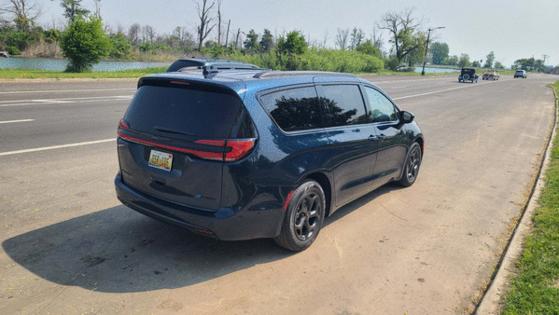
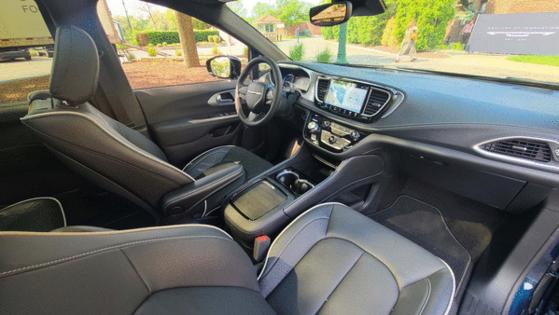
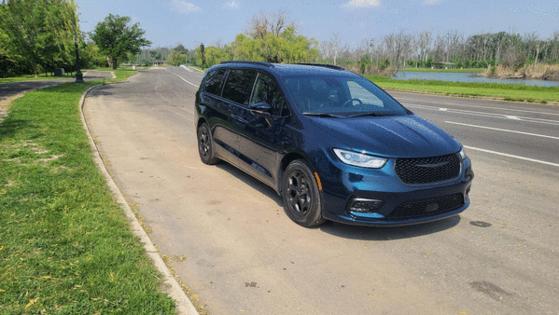
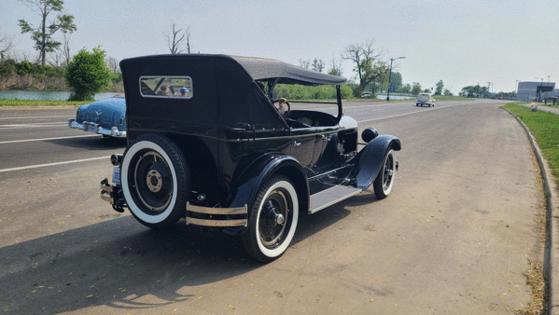
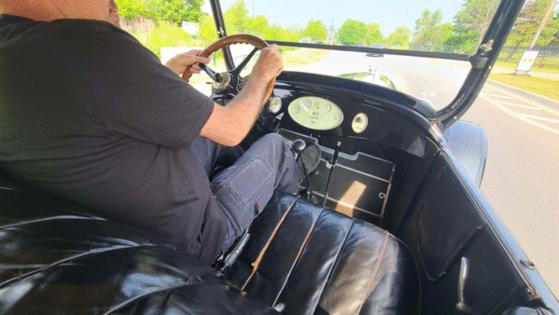












Comments